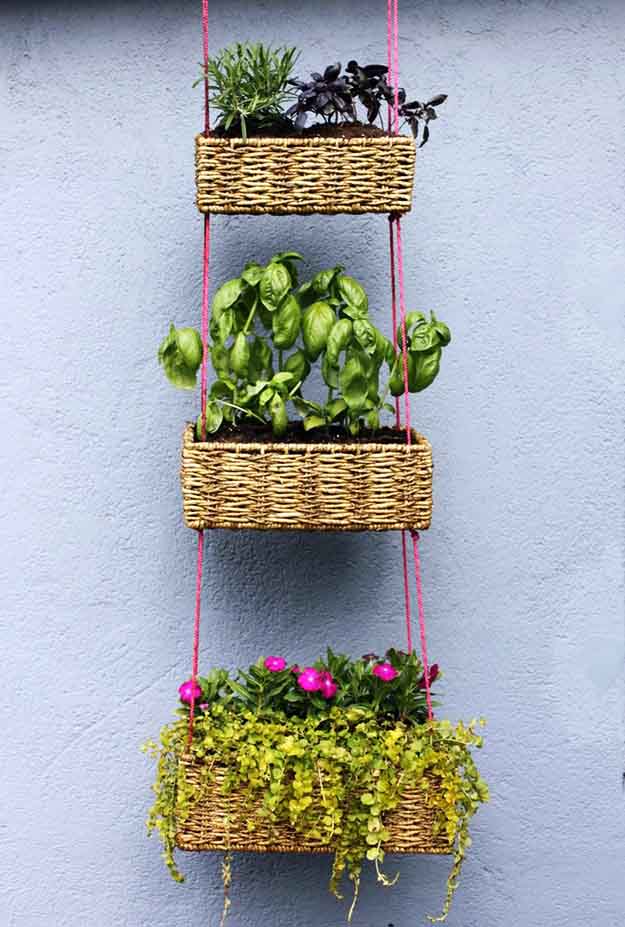Maximize Small Spaces, Hanging Basket Gardening

Maximize Small Spaces: A Comprehensive Guide to Hanging Basket Gardening
Are you dreaming of a lush garden but feel held back by your tiny urban space? Small-space gardening with hanging baskets might just be the solution you're looking for. Let's dive into the world of hanging basket gardening and explore how it can transform your balcony or small yard into a thriving urban garden.
The Magic of Hanging Baskets in Small Spaces
Hanging baskets are a game-changer when it comes to small-space gardening. They allow you to maximize your vertical space, creating a lush, green oasis without taking up precious floor area. Imagine your balcony or patio adorned with cascading flowers and trailing greenery—a true urban gardening paradise.
Why Choose Hanging Baskets for Your Small Garden?
Hanging baskets offer numerous benefits. They keep plants out of reach from pets and pests, provide better air circulation, and can be easily moved around to optimize sunlight exposure. Plus, they add a charming touch to your outdoor space, making them a fantastic balcony garden option.
Getting Started: What You Need for Hanging Basket Gardening
To embark on your hanging basket gardening journey, you'll need a few essentials:
- Hanging baskets or containers
- High-quality potting mix
- Water-retaining crystals (optional, but helpful)
- Plants suitable for hanging baskets
- Fertilizer
- Watering can or hose with a gentle spray nozzle
Choosing the Right Plants for Your Hanging Baskets
Selecting the right plants is crucial for a successful hanging basket garden. Opt for varieties that trail or cascade, such as:
- Flowers: Petunias, geraniums, lobelias, and fuchsias
- Foliage: Ivy, spider plants, and Boston ferns
- Edibles: Strawberries, cherry tomatoes, and herbs like basil and thyme
How to Plant a Hanging Basket: A Step-by-Step Guide
1. Prepare Your Basket Line your basket with a coconut fiber or moss liner to retain moisture and prevent soil from falling out.
2. Add Potting Mix Fill the basket about two-thirds full with a high-quality potting mix.
3. Plant Your Plants Gently remove your plants from their nursery pots and arrange them in the basket, ensuring their root balls are well-covered with soil.
4. Water Thoroughly Give your newly planted basket a good soak, ensuring water drains out the bottom.
5. Hang and Enjoy Hang your basket in a spot that receives the appropriate amount of sunlight for your chosen plants.
For a more detailed guide, check out this helpful article from Gardeners.com.
Caring for Your Hanging Basket Garden
Watering is key in hanging basket gardening. Since baskets dry out quickly, especially in windy or sunny conditions, daily watering may be necessary. Adding water-retaining crystals to your potting mix can help keep moisture levels consistent.
Fertilizing regularly is also crucial. Use a water-soluble fertilizer every two weeks to keep your plants healthy and blooming.
Pruning encourages bushier growth and more flowers. Don't be afraid to give your plants a trim when they start looking leggy.
Vertical Gardening: Maximizing Your Space
Incorporating vertical gardening techniques can further enhance your small-space gardening efforts. Consider installing wall-mounted planters or trellises to support climbing plants, creating a lush, green backdrop for your hanging baskets.
Container Gardening: The Perfect Companion
Container gardening pairs beautifully with hanging baskets. Use pots of various sizes to create visual interest and add more plant diversity to your small garden. Remember, the key to successful container gardening is choosing the right pot size for your plants and ensuring adequate drainage.
Space-Saving Tips for Your Urban Garden
- Stack and Hang: Use tiered planters and hanging pockets to maximize vertical space.
- Go Modular: Opt for modular, wall-mounted systems that allow you to easily add or rearrange plants.
- Repurpose: Transform old ladders, shelves, or pallets into unique plant displays.
Troubleshooting Common Hanging Basket Issues
- Drying Out Too Quickly: Move your basket to a shadier spot or add water-retaining crystals to the soil.
- Not Blooming: Ensure your plants are getting enough sunlight and fertilizer.
- Pests: Treat with an insecticidal soap or neem oil, following package instructions.
Embrace the Seasons with Your Hanging Basket Garden
Don't let cooler temperatures deter you. Swap out summer annuals for fall-blooming plants like mums or pansies to keep your hanging basket garden vibrant year-round.
Conclusion
Small-space gardening with hanging baskets is not just a practical solution—it's an opportunity to create a stunning, personalized urban oasis. With the right plants, care, and a touch of creativity, your tiny balcony or patio can become a lush, inviting retreat. So, what are you waiting for? Get started on your hanging basket gardening adventure today!
FAQs
1. What are the best plants for hanging baskets? Trailing and cascading plants like petunias, geraniums, ivy, and spider plants thrive in hanging baskets.
2. How often should I water my hanging baskets? Watering needs vary, but hanging baskets often require daily watering, especially in hot or windy conditions.
3. Can I grow vegetables in hanging baskets? Yes! Compact vegetables like cherry tomatoes, strawberries, and herbs do well in hanging baskets.
4. How do I prevent my hanging baskets from drying out too quickly? Add water-retaining crystals to your potting mix and position your baskets in a spot that receives some shade.
5. Can hanging baskets be used indoors? Absolutely! Just choose plants that thrive in indoor conditions, like spider plants, Boston ferns, or pothos.
0 Response to " Maximize Small Spaces, Hanging Basket Gardening"
Post a Comment